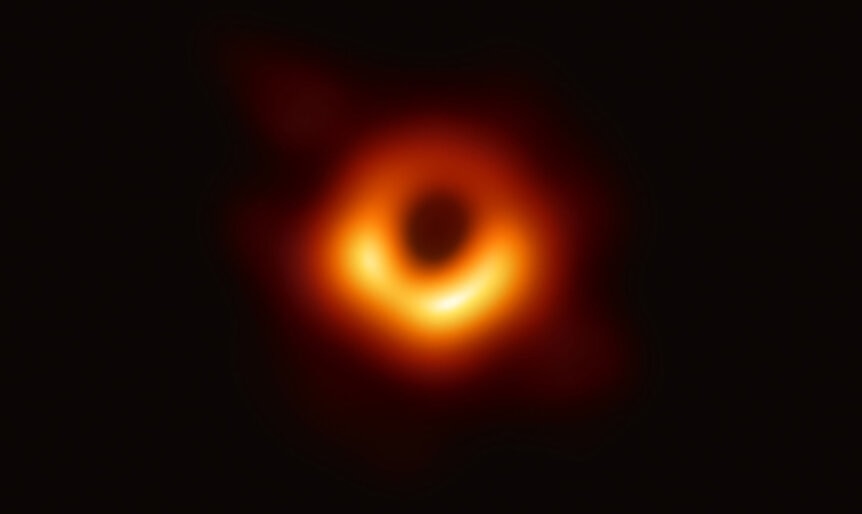Create a free profile to get unlimited access to exclusive videos, sweepstakes, and more!
Are supermassive black holes killing their host galaxies?
Fast and furious winds from black holes suppress star birth.

A new study using archived astronomical observations across the electromagnetic spectrum has come to a rather startling and somewhat unsettling conclusion: Supermassive black holes in the centers of many galaxies may have suppressed star formation early on after those galaxies formed, effectively killing them.
In very general terms, when we look around the nearby Universe today, we see two types of galaxies: Ones that are still making stars, like the Milky Way, and ones that don’t. Many of these galaxies are ellipticals: Cotton-ball-like galaxies that have lots of stars but virtually no gas and dust, the raw fuel to make stars. And in fact the stars in these galaxies are very old, indicating the galaxies made stars early on but then stopped for some reason.
Massive stars are luminous and blue and don’t live long, so star-forming galaxies tend to be bluer. Galaxies with older stars look redder, so we call them “red and dead” — an anthropomorphic bias, though not a terrible one, that galaxies making stars are still “alive.”
But why? What killed off star formation in these red and dead galaxies?
We’ve suspected for a while that, among other things, it might be black holes. All big galaxies have supermassive black holes in their centers, ones with millions or even billions of times the Sun’s mass. We don’t know exactly how they grow huge, which is one of the biggest puzzles in cosmology right now. But we know they had to feed like rampaging gourmands, gobbling down matter at ferocious rates.
When that matter falls down toward the galactic center it piles up around the black hole and gets hellaciously hot. This creates a powerful wind of subatomic particles that can flow away from the black hole at tremendous speed, with enough momentum outward to actually blow away the material feeding the black hole. If it’s powerful enough, it can actually blow the gas out of the galaxy entirely, shutting down star formation.
Is this why some galaxies die early on?
To find out, astronomers looked at observations of the distant Universe from a variety of telescopes, looking at visible light, infrared, radio, and X-rays [link to paper]. They divided the galaxies into two groups: Those with active star formation and those that were quiescent. Making stars makes a lot of ultraviolet light, which gets redshifted to visible and infrared for galaxies that are very far away, so looking for galaxies bright at those wavelengths is a good way to distinguish them from galaxies that may have already been dying back then and not producing stars.
Actively feeding black holes produce a lot of X-rays and radio waves, so they turned to those observations next. But they ran into a problem: Quiescent galaxies don’t produce much of that kind of light, and don’t show up in the surveys.
So they did something clever: They knew the positions of those galaxies from the other observations, so they went to the radio and X-ray surveys and looked at how bright that spot in each is for all those galaxies. They then added all those observations together to create an “average” galaxy, and used that to compare the two groups.
How does that work? An individual galaxy doesn’t produce enough X-rays to statistically distinguish it from background noise, which is just random X-rays hitting the detector. But if you add a lot of them together, on average the galactic X-rays will pile up, while the background X-rays don’t. It’s a bit like flipping a coin a few times and getting more heads than tails; is that statistically significant? Probably not; you need to flip it dozens, hundreds of times for the signal of heads versus tails to grow over the random noise of individual flips.
When they did this with the X-ray and radio observations they found that these distant galaxies were indeed emitting X-rays and radio waves, and more than you would expect just coming from the usual processes in that galaxy — lots of objects emit these kinds of light, which can be accounted for. That means these galaxies do have black holes gobbling down matter, what we call active galaxies.
The conclusion? Active galaxies with growing black holes were more likely to produce quiescent galaxies than ones that had black holes that weren’t feeding. In other words, it looks like, on average, active black holes are choking off star formation in their host galaxies, a process astronomers call quenching.
The black holes are killing their host galaxies.
Again, this is the case on average. They had to add together the signals from lots of galaxies to draw this conclusion. And while they are very likely right — it’s the way I’d bet, certainly — averaging erases details. So this is a broad conclusion that is good for classes of galaxies, but may not hold for individual ones. Some active galaxies may have still produced stars, and some with quiet black holes may still have died. The only way to get past this is deeper surveys, or to look more deeply at individual galaxies to get a better handle on the vagaries of each.
This is certainly going to give astronomers something to think about. The supermassive black holes in galactic centers definitely affect their host galaxies overall; we’ve known this for decades. And we’ve suspected black hole winds can quench them, but now there’s pretty good evidence for it. This new work could open up new ways to look into this effect, and try to understand why some galaxies thrive today, like our Milky Way, and others are not so fortunate.





























